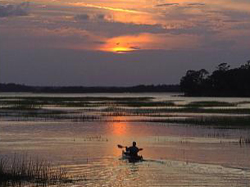Celebrate endangered species success stories, including the American bald eagle, peregrine falcon, gray wolf, grizzly bear, humpback whale and many others. This will be the third consecutive year for this national celebration of America's commitment to protecting and recovering our nation's endangered species. Events are held across the country to highlight endangered species stores.
This year, Endangered Species Day will raise awareness about the threats to endangered species – including global warming - and the success stories in species recovery. It will provide an opportunity for schools, libraries, museums, zoos, botanical gardens, agencies, businesses, community organizations and conservation organizations to educate the public about the importance of protecting endangered species. It is also an opportunity to highlight the everyday actions that individuals and groups can take to help protect our nation's wildlife, fish and plants. Because 2008 has been designated as The Year of the Frog by the Association of Zoos and Aquariums, a special focus will be on the threats faced by declining amphibian populations.
With more than 1,800 species now listed as threatened and endangered, and thousands more threatened with extinction unless they receive Endangered Species Act protections, all public education efforts are extremely valuable. Help celebrate Endangered Species Day by learning about endangered species in your area, providing habitat for wildlife in your backyard, joining Frogwatch, visiting your local zoo, aquarium or endangered species habitat.
To find Endgangered Species Day Activities in your area visit the Endangered Species Coalition website.

Watch Georgia Outdoors: Georgia's Rare, Threatened and Endganged Species



































